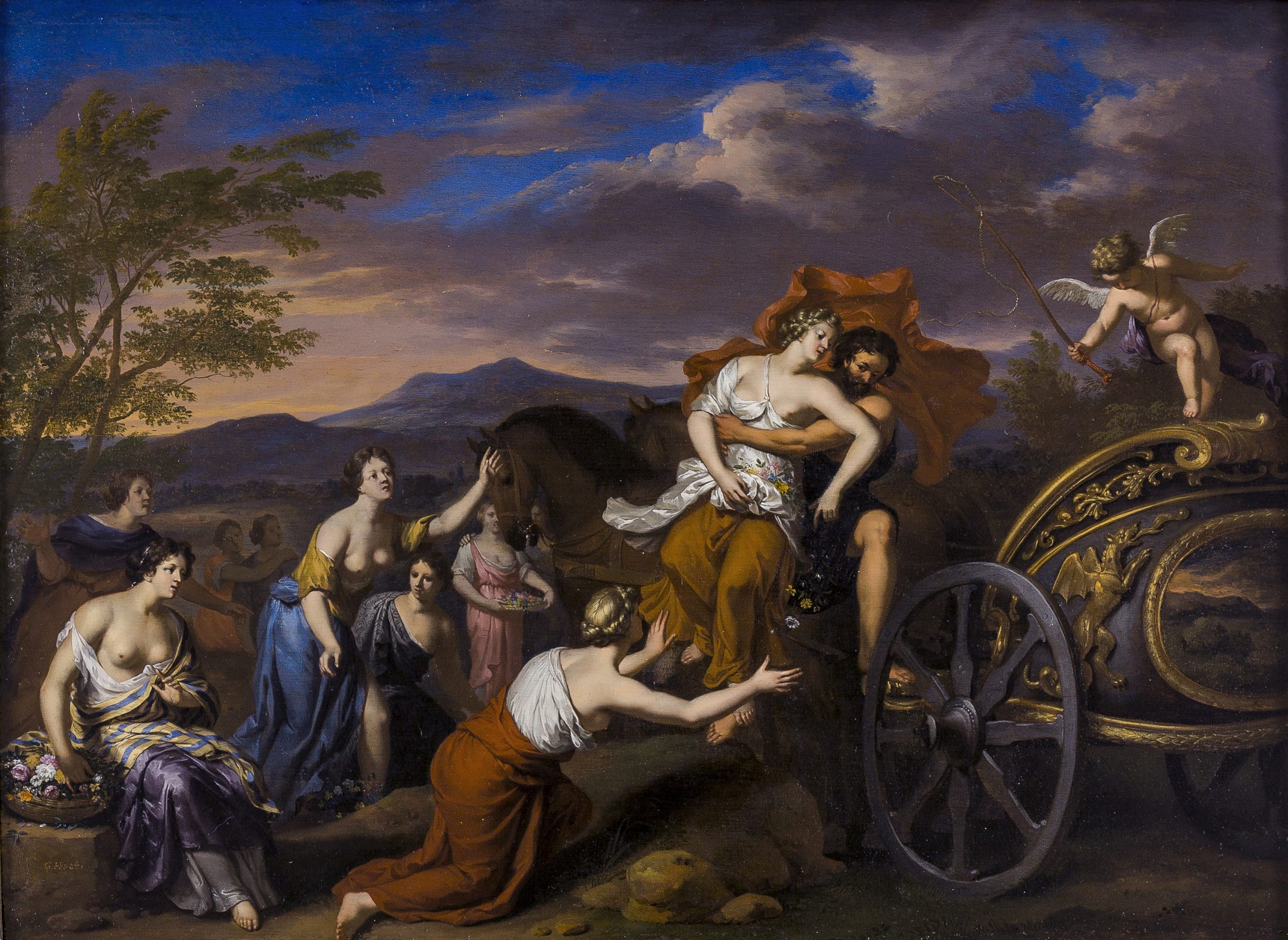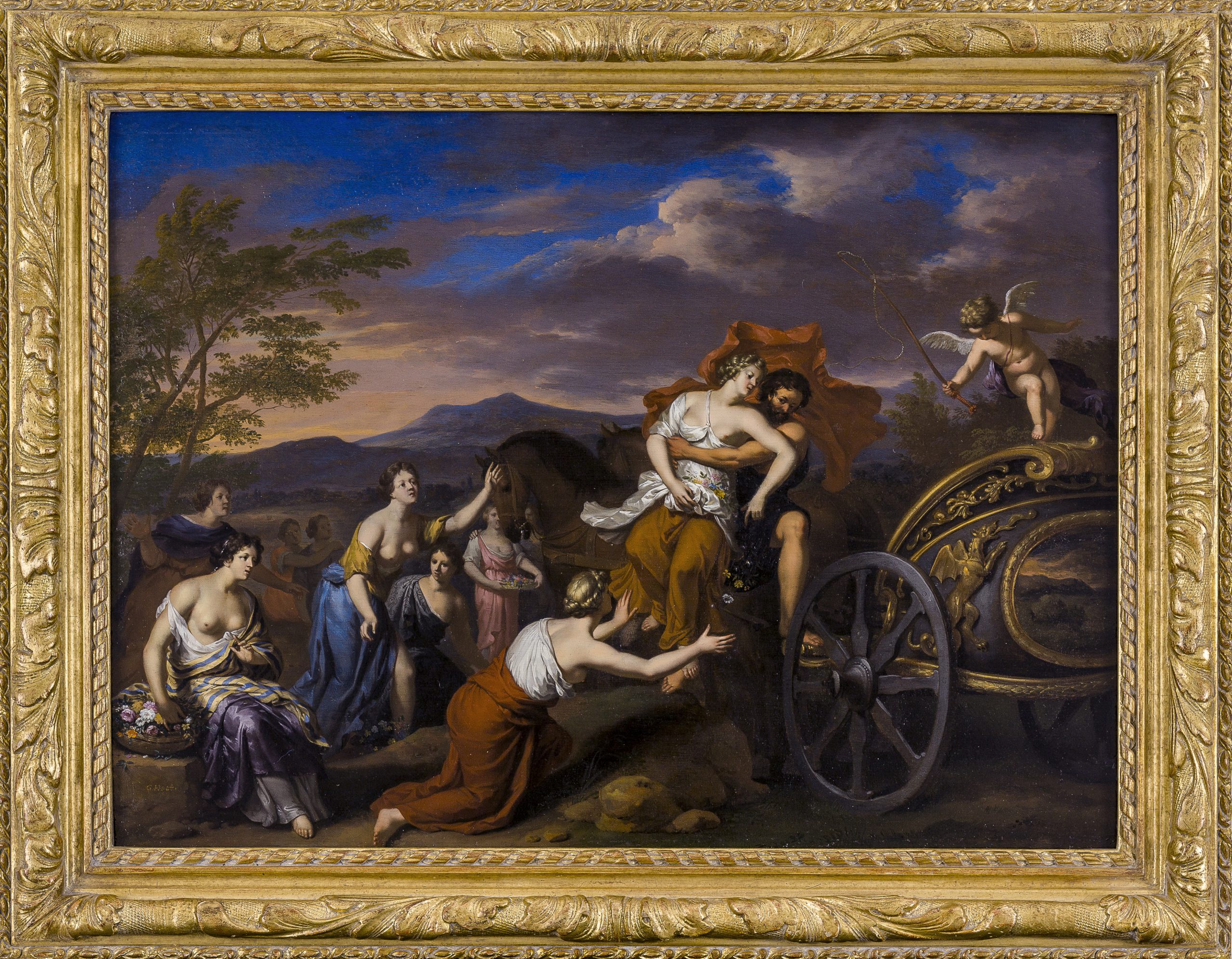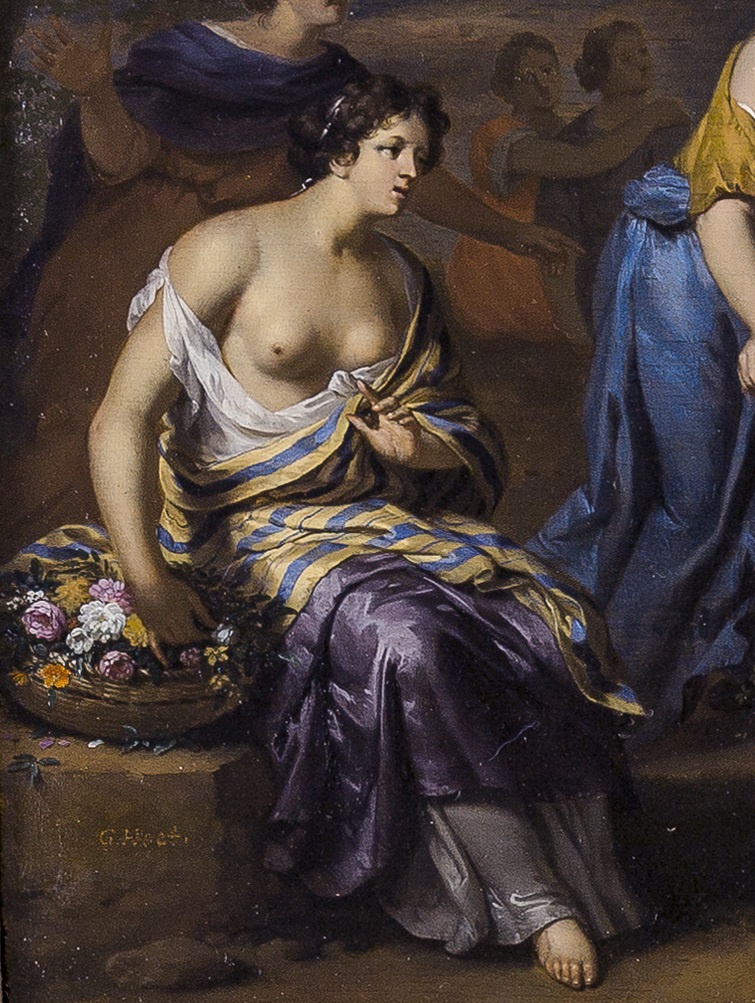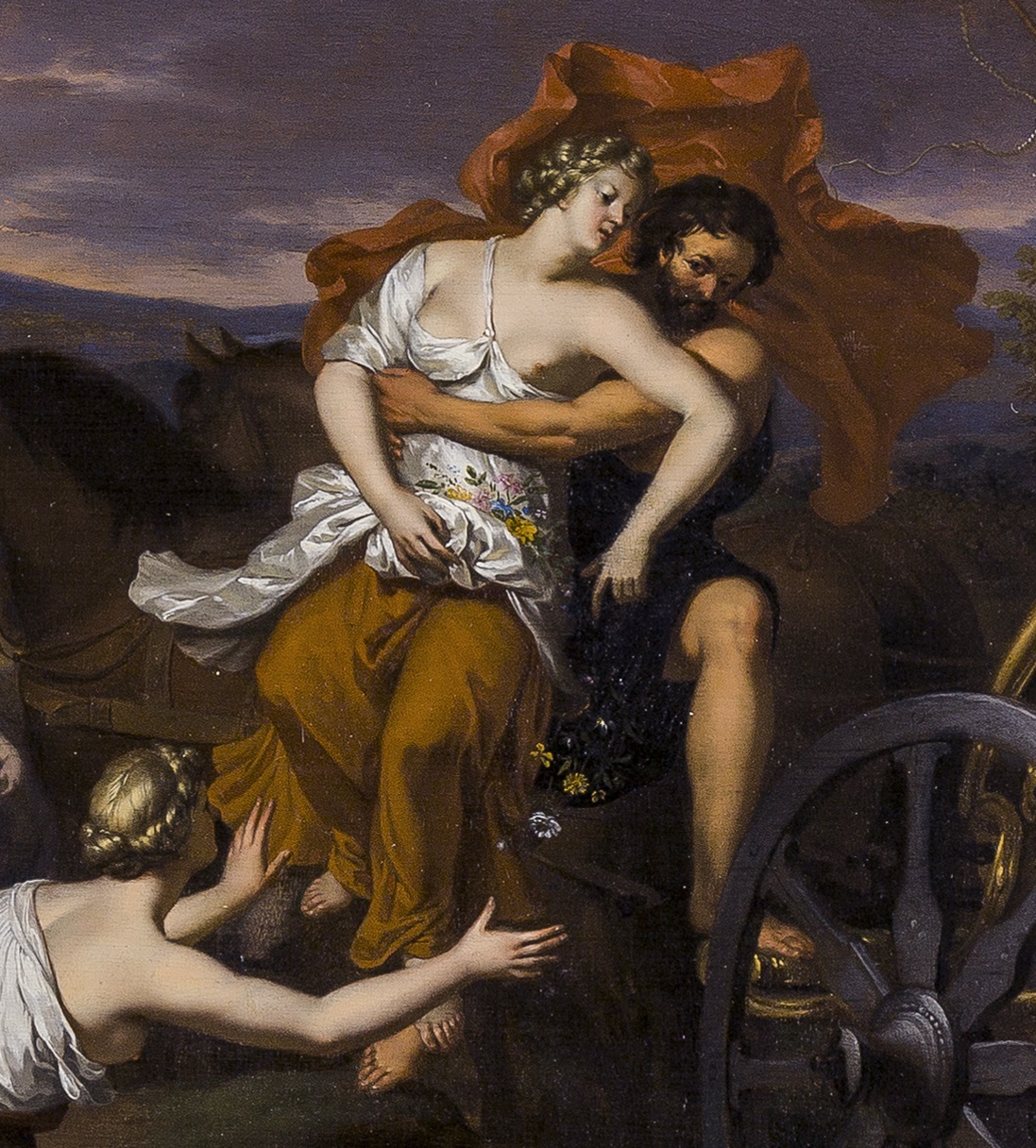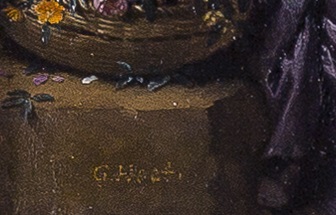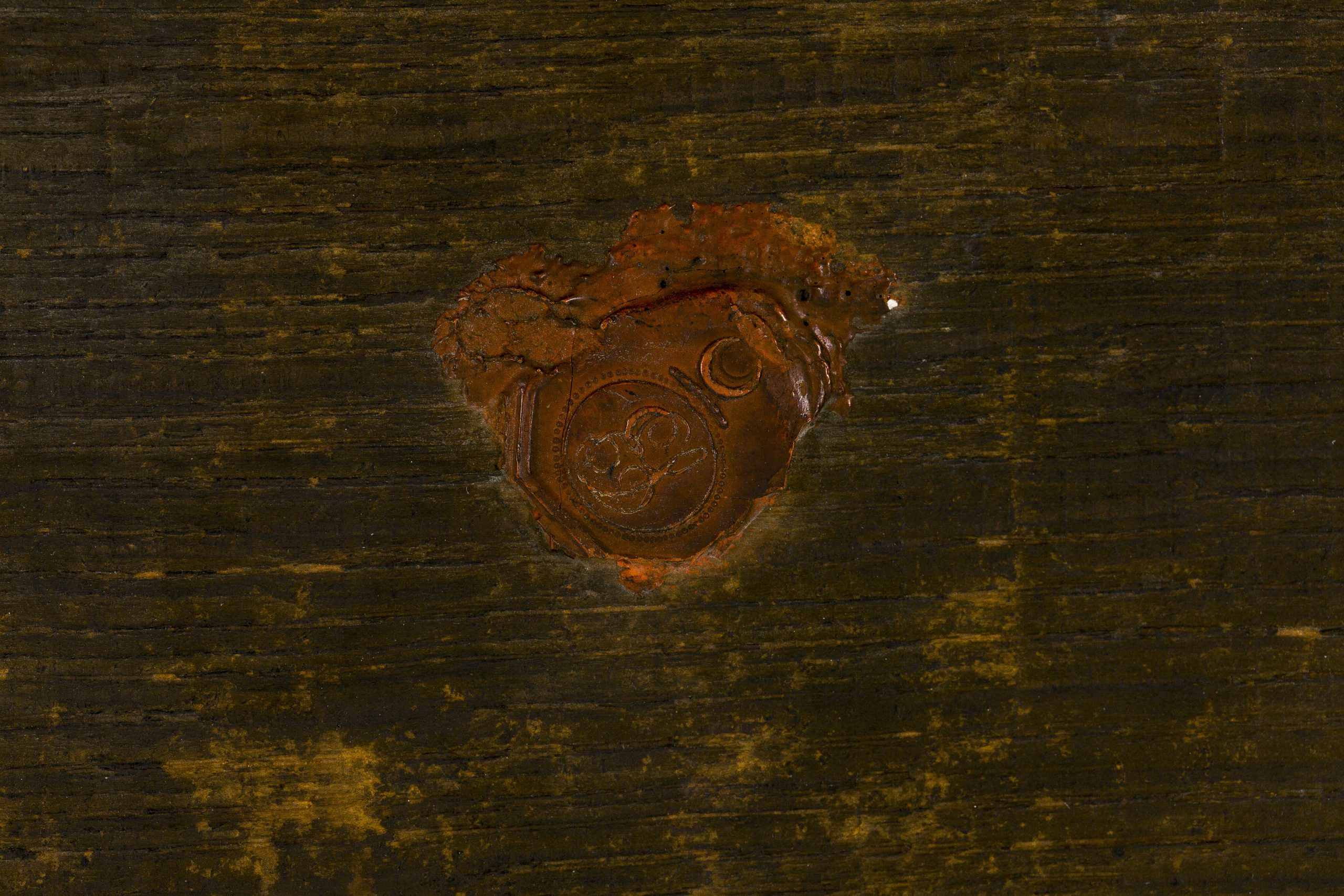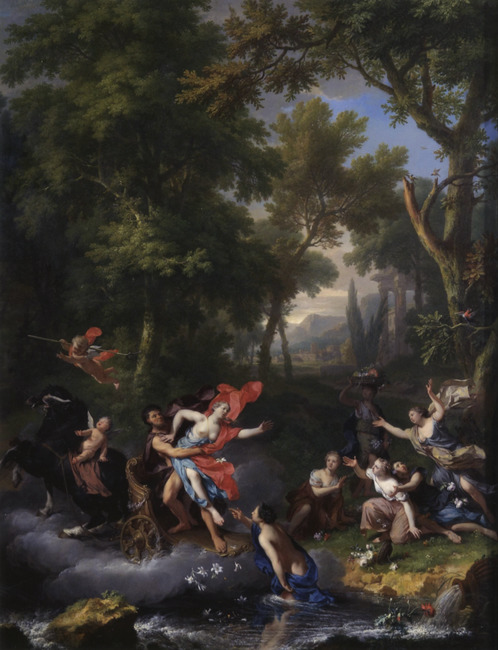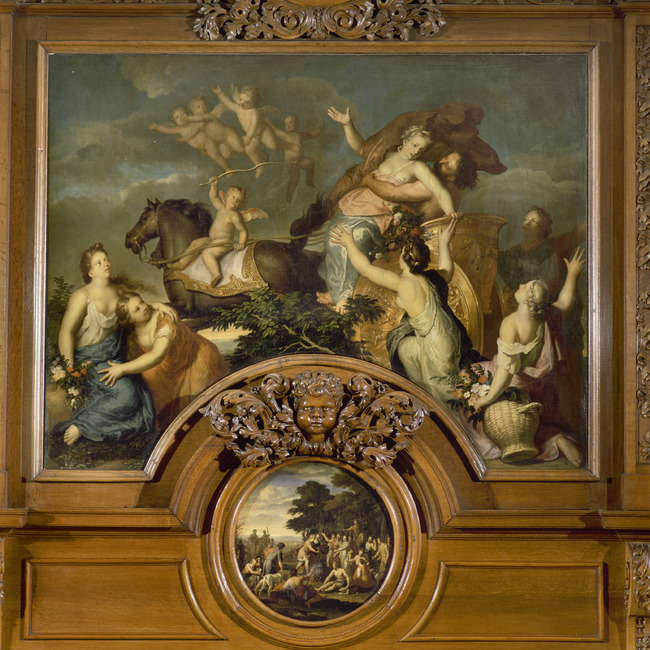GERARD HOET (Zaltbommel 1648 – 1733 The Hague)
Gerard Hoet (Zaltbommel 1648 – 1733 The Hague)
The Rape of Proserpina
Oil on panel, 40.5 x 55 cm (15.9 x 21.7 inch); framed in a carved and gilt modern frame of 18th-century model
Signed ‘G. HOET’ (lower left)
Provenance
Possibly identical with ‘G. HOET. The Rape of Proserpine, the figures elegant, and very delicately finished’, Messrs Christie, London, 18 February 1820, lot 80 (sold to ‘M’ for 10.5.0); unidentified armorial seal on back; anonymous sale, Dorotheum, Vienna, 18 May 1965, no. 53 (reproduced plate 13); private collection, Austria
***
Gerard Hoet was born in Zaltbommel and was taught the first elements of painting and drawing by his father, the glass painter Moses Hoet, and continued his education in the studio of Warnard van Rijsen, who himself had been a pupil of Cornelis van Poelenburgh.1 In 1672 Hoet moved to courtly The Hague and set up his own studio as an independent master. The following year he travelled to Paris, and returned via Brussels, studying the artistic developments in France and Flanders. Upon his return, he settled in Utrecht, where he was patronised by Frederick van Nassau van Zuylestein, an illegitimate son of Stadtholder Prince Frederick Henry of Orange. Noblemen from the direct entourage of Stadtholder-King William III also provided commissions. Hoet founded a drawing academy in 1697 together with the painter Hendrick Schoock. Among his pupils were his own sons Hendrik Jacob Hoet and Gerard Hoet II.
Hoet specialised in highly refined paintings which subjects mostly taken from mythology, ancient history and the bible, generally set in idyllic landscapes. He also produced large-scale paintings, decorating whole rooms, which were popular during the period. Hoet’s paintings personify the Classicising style of Dutch Academic art, which became de rigeur towards the end of the seventeenth century, characterised by carefully prepared drawings based on life Academy drawings. Its foremost proponent, Gerard de Lairesse, wrote: ‘away with fumbling, grubbing, and messing: attack your work with a manly hand. But not like Rembrandt … so that the sap runs down the piece like dung.’ Towards the end of his life Hoet also became a leading art dealer.
The present panel, which is very well preserved, is a typical and particularly beautiful example of Hoet’s most valued paintings. The subject, the ‘rape’, in the sense of abduction, of Jupiter’s daughter Proserpina (Persephone in Greek) by Hades, God of the Underworld, who carried her off to the Underworld and made her his wife, as recounted in Ovid’s Metamorphoses, a hugely influential work as a source for the visual arts. Few Dutch artists depicted this scene around the year 1700, an exception being a collaborative painting between Nicolaas Verkolje and Jan van Huijsum, now in the collection of the Duke of Wellington at Apsley House, London (fig.).2 The subject was also treated by Hoet in a larger canvas as part of a chimney arrangement in the Grote Zaal of Slangenburg Castle in Doetinchem (fig.).3
Excellent examples of Hoet's work can be found in the collection of the National Trust (Stourhead) and The Dulwich Picture Gallery.
A very attractive pair of paintings by Gerard Hoet is also currently offered by our gallery and can be found here. An interesting drawing by the master was previously sold by us.
1. For the artist, see E.J. Sluijter, ‘Een zaalbeschildering van Gerard Hoet in ‘De Slangenburg’: de liefdesgeschiedenis van Aeneas en Dido’, Nederlands Kunsthistorisch Jaarboek 31 (1980), p. 299-315 and Saur Allgemeines Künstlerlexikon: die bildenden Künstler aller Zeiten und Völker, Munich 1992- , vol. 74 (2012), pp. 40-41.
2. Oil on panel, 80.7 x 62.8 cm; P. Knolle and E. Korthals Altes (ed.), Nicolaas Verkolje 1673-1746: de fluwelen hand, Zwolle 2011, p. 36, fig. 1 and p. 81, repr.
3. Oil on canvas, 144 x 190 cm, RKD images no. 199801; see also F. van Burkom, Leven in toen: vier eeuwen Nederlands interieur in beeld, Amsterdam 2001, p. 73.
